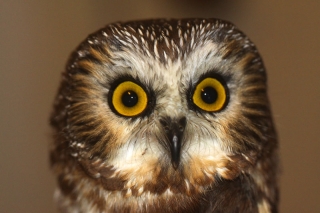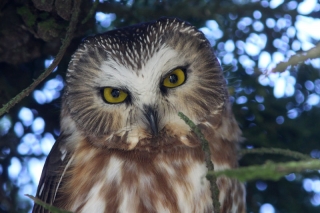Thanksgiving on the Island
This is the fourth Thanksgiving I’ve spent away from home (Antarctica, Galapagos, California), and likely not the last, so I’m getting used to celebrating the holidays in new places. (I’ll also be in Costa Rica this Christmas, New Years, and for my 25th birthday). Our island crew had a fine dinner. Even though Jim’s vegetarian, the other three of us cooked a turkey, along with green beans, potatoes, gravy, cranberries, stuffing, and sweet potato pie. We’ll be eating leftovers for at least a week.
I was on the Burrowing Owl night shift, so, after dinner, I headed outside as the others went to bed. It was a beautiful night, calm and clear, perfect for sneaking around with a telemetry antenna, chasing tagged owls into the wee hours. A late climb up Lighthouse Hill afforded a spectacular view of the nearly-full moon rising over downtown San Francisco. Visibility was crystal clear, so I set up a spotting scope in the dark and watched traffic lights changing 25 miles away, tiny pricks of green, yellow, and red lights. At 2am, it was weird to peer into such an utterly different world. I’m not sure where I’ll be next Thanksgiving, but I sure won’t forget this one.































































